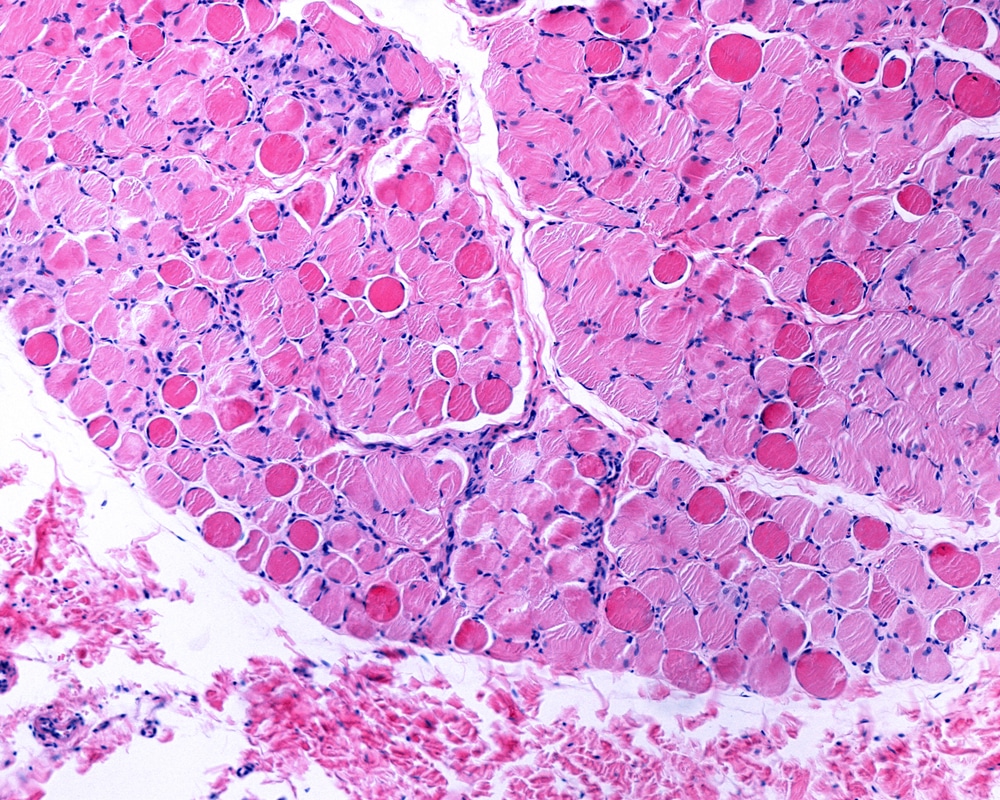Newsletter Signup - Under Article / In Page
"*" indicates required fields
The first patient has been dosed in a phase 2 pilot study looking at a treatment for muscular dystrophy.
Santhera Pharmaceuticals and ReveraGen BioPharma made the announcement that vamorolone is to be assessed in patients with Becker muscular dystrophy (BMD). The study is being funded by the U.S. Food and Drug Administration (FDA).
Eric Hoffman, CEO of ReveraGen BioPharma, said: “There are currently no approved drugs for BMD in any country, and no drugs in clinical development for this indication in the USA or Europe.
“Vamorolone has shown efficacy in the pivotal VISION-DMD study in Duchenne muscular dystrophy (DMD), a more severe but related disease, and, based on these findings and its mechanisms of action, this developmental compound may show a benefit in BMD.”
Clinical study
This study is a randomized, double-blind, placebo-controlled study to evaluate the safety, tolerability and exploratory clinical efficacy on motor function outcomes of vamorolone compared to placebo over a treatment period of 24 weeks in 39 males (over 18 and under 65 years) with BMD.
Participants will be randomized 2:1 to vamorolone 500 mg (250 mg for body weight of under 50 kg) daily or placebo. The clinical trial plans to enroll at sites in Pittsburgh in the U.S., and Padova in Italy.
The study is funded by a $1.20 million grant from the FDA under its Clinical Studies of Orphan Products Addressing Unmet Needs of Rare Diseases (R01) grants program. The grant adds to existing grants from the National Institutes of Health (NIH) – National Institute of Arthritis and Musculoskeletal and Skin Diseases (NIAMS), and the Foundation to Eradicate Duchenne to carry out a clinical trial of vamorolone in adults with BMD.
Shabir Hasham, chief medical officer at Santhera, said: “The treatment of BMD is lacking standard of care recommendations albeit there is a high unmet medical need, and about one fifth of BMD patients use some chronic steroid dosing which is often not well tolerated.
Therapeutic approach
“Vamorolone could address some important safety concerns that may lead to poor tolerability or early treatment discontinuation, and thus may potentially represent a novel therapeutic approach to the treatment of BMD as a chronic therapy.”
BMD, the second most common progressive muscle wasting disease, is similar to DMD, but usually milder. It is caused by the same dystrophin gene (allelic) mutations as DMD but shows residual dystrophin protein in muscle, and variable onset and progression of muscle weakness.
Paula Clemens, the study chair of the clinical trial, said: “Vamorolone has been shown to suppress dystrophin-targeted microRNAs, and thus has the potential to increase dystrophin levels in BMD muscle.”
Vamorolone is a drug candidate with a mode of action that binds to the same receptor as corticosteroids but modifies its downstream activity and as such is considered a dissociative anti-inflammatory drug.






